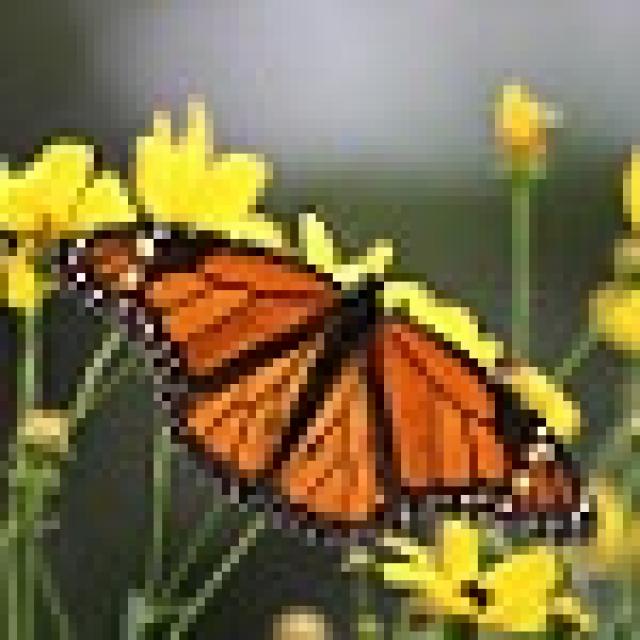
Date: 08/28/2015
Number: 30
My family and I visited South Bass Island in Lake Erie on August 28 and 29th. We found monarch eggs and a larva at the Put-in-Bay winery, a 5th instar at DJ parker's B&B garden, a 5th instar on the milkweed planted in front of the butterfly house, and lots of monarch activity at the lighthouse waystation. The sunflower field adjacent to the lighthouse has been mowed, but the lighthouse waystation is serving as a great nectar source and place for reproductive females to lay their eggs. On Saturday, I noted two males and four females. One very old and worn female was egg dumping, I saw her lay 6 eggs on one 6” tall milkweed plant, and 10 eggs on one 8” tall plant. She was basking on the ground at times, and seemed almost too weak to fly high at times--she flew up into the tall coreopsis to nectar, then bask and returned to laying eggs on the young milkweed shoots. The other younger females were laying eggs everywhere, but especially on the milkweed that had been pruned this summer and now sported fresh new growth. Females laid eggs on top of the leaves, on stems, and the underside of leaves. One female was missing her entire right hindwing, and she often laid eggs on the upperside of the leaves. The other females laid primarily on the underside, and skillfully moved throughout the milkweed patch, weaving in and out amongst the milkweed plants. All ovipositing monarchs heavily preferred the common milkweed, and used it on both ends of the garden. The males were nectaring heavily, and one male was nectaring so heavily from the ironweed that Maya was able to sneak up on him and grab him with her bare hands. I saw two milkweed tussock moth larvae crawling around, looking for a place to pupate. Visitors saw me taking photos and saw the waystation sign, and came over to ask me questions. We spoke at length, then I gave them the brochures I had in my car and directed them to the nature center. All monarchs nectared heavily from the tall coreopsis, which was clearly the preferred nectar source now, as well as the ironweed. The heat and high winds make it challenging to grow plants at this location, but the natives have done very well. On Sunday, I did not see the old female but three females were again ovipositing and males were nectaring. I noticed one monarch had a lot of black near the tip of the forewing--missing some white spots. Hmmm....
See https://www.flickr.com/photos/candy__kasey/albums/72157658035464025 and https://www.flickr.com/photos/candy__kasey/sets/72157657591011210
Put-in-Bay, OH
Latitude: 41.7 Longitude: -82.8
Observed by: candy
Contact Observer
The observer's e-mail address will not be disclosed.
Contact will be made through a web-based form.